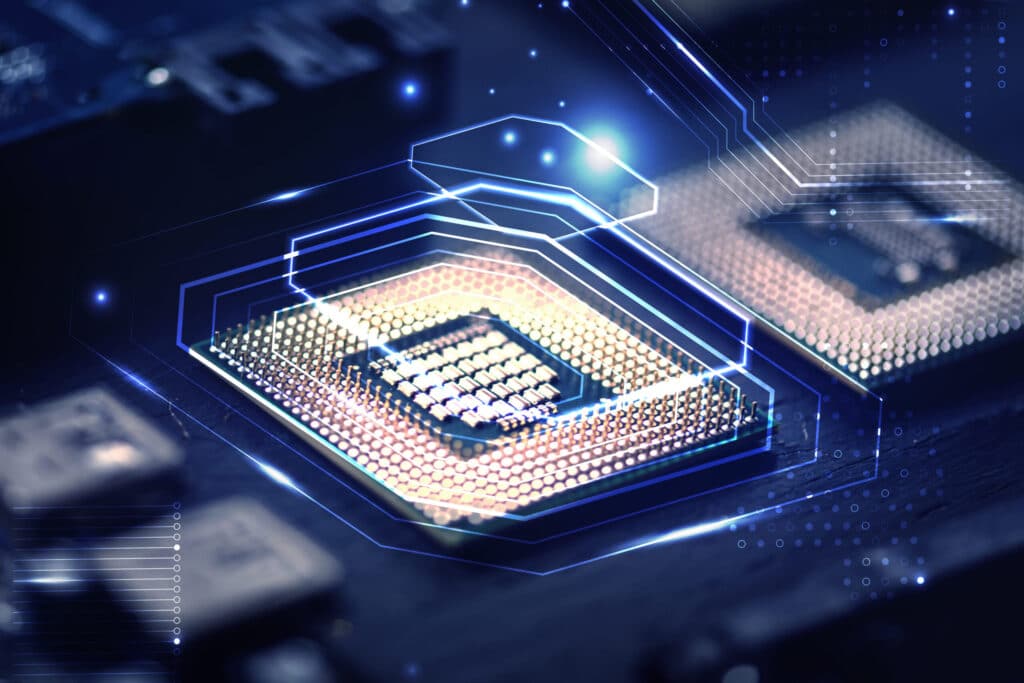This market research report was originally published at the Yole Group’s website. It is reprinted here with the permission of the Yole Group.
The 2025 edition of the world’s largest consumer electronics conference showcased the latest semiconductors for artificial intelligence applications
The CES 2025 conference in Las Vegas showcased the latest semiconductor innovations, offering some insights into the competitiveness of the market leaders. Here, Yole Group highlights some of the noteworthy developments and what they indicate for the semiconductor space.
This snapshot is derived from the extensive series of reports published by Yole Group throughout the year, encompassing the entire semiconductor industry, including memory, computing, and, notably, semiconductors for automotive applications.
HBM releases advance AI development
“High-bandwidth memory (HBM) chips are a crucial component in advancing artificial intelligence (AI) technologies and CES offered a glimpse into the strategic competitiveness of memory suppliers.”
Josephine Lau
Senior Technology and Market Analyst, Memory, Yole Group

South Korean chipmaker SK Hynix showcased on-device AI products such as LPCAMM and ZUFS 4.0 which improve data processing speed and power efficiency to implement AI in edge devices like PCs and smartphones. It also demonstrated the industry’s highest 16-Hi HBM3E, a testament to its technological lead. Its HBM quad-level cell (QLC) technology in 3D NAND seeks to extend SSD’s density limit in consumer applications. Yole Group expects QLC bit crossover for client SSDs in 2026.
Solidigm’s D5-P5336 and Phison’s Pascari D205V showcased the industry’s highest density 122TB enterprise SSDs used for workloads such as AI training and media streaming applications. Solidigm’s product offers the largest existing capacity, high power and space efficiency and has been attracting considerable interest from AI data center customers since its announcement in November last year.
Nvidia’s CEO, Jensen Huang, said that Micron will supply its G7 1.8 terabytes per second HBM for the new GeForce RTX Blackwell family of gaming chips. This reaffirms the supplier is making headway within a key HBM customer beyond data center applications.
Computing leaders bring AI to the PC
In the computing space, firms introduced PCs and laptops with new AI processors. Among them, AMD displayed its new Ryzen AI PRO AI PC processor, an NPU with up to 55 teraflops per second (TOPS).
Qualcomm introduced the Snapdragon X platform, expanding its high-performance PC portfolio to include more affordable devices.
Meanwhile Nvidia showcased its GB10 processor for desktop computers and robots, designed with MediaTek. The processor is in production now for release in 2026. Additionally, the RTX 5090 Max Q Laptop with up to 1,850 AI TOPS using the Blackwell GPU, GDDR7, will be available in March 2025, demonstrating Nvidia’s focus on the “AI Computer Graphic”.
“Jensen stole the show with his big “wafer”, but no major news for servers. However, Nvidia is now stepping into arm-based desktop processors with its GB10.”
Hugo Antoine
Technology and Market Analyst, Computing and Software, Yole Group
Mediatek has cooperated with Intelligo for edge AI applications on Smart Home AI Hub using its flagship mobile platform 9400. It has also teamed up with Google using the new MT7903 Internet of Things (IoT) for smart home applications.
Televisions stood out at CES as a central element of the smart home, incorporating increased semiconductor content to enable enhanced functionalities including AI-based features.
Automotive sees incremental progress and emerging opportunities
“There were no significant announcements in automotive technology at CES, but growth is expected to resume by mid-2025 after a challenging 2024 as semiconductor content in vehicles increases.”
Yu Yang
Principal Analyst, Automotive Semiconductors, Yole Group
Clear progress was demonstrated in advanced driver assistance systems (L2 and L2+) and autonomous driving (L4).
For instance, Amazon’s autonomous vehicle subsidiary Zoox announced its plan to start commercial operations this year. This reflects a revival in companies targeting Level 4 autonomous driving for robotaxi services, which is covered in Yole Group’s 2024 automotive semiconductor report on Apollo Go from Baidu, an increasingly popular service in China. We expect positive business cases for robotaxis to emerge soon, which will further facilitate the transition to autonomous driving.
Meanwhile, Taiwan-based AUO demonstrated some interesting concepts enabled by the use of microLED in the vehicle interior, such as a virtual sky canopy, XR interactive window, horizon image glass and morphing center control.
Yu Yang from Yole Group adds: “The first production microLED on a vehicle’s front panel is coming soon from Sony Honda Mobility’s Afeela. MicroLED technology provides a new dimension to vehicle interior and exterior design. It enables enhanced cabinet experiences, which are turning out to be a winning factor for OEMs.”
Toyota’s next-generation vehicles will feature automated driving capabilities enabled by Nvidia’s Drive AGX Orin.
“The partnership with the world’s leading car OEM opens up significant growth potential in the years to come for Nvidia’s automotive business.”
Adrien Sanchez
Senior Technology and Market Analyst, Computing and Software, Yole Group
Stay tuned for Yole Group’s analysis of how these new releases impact the semiconductor markets.


